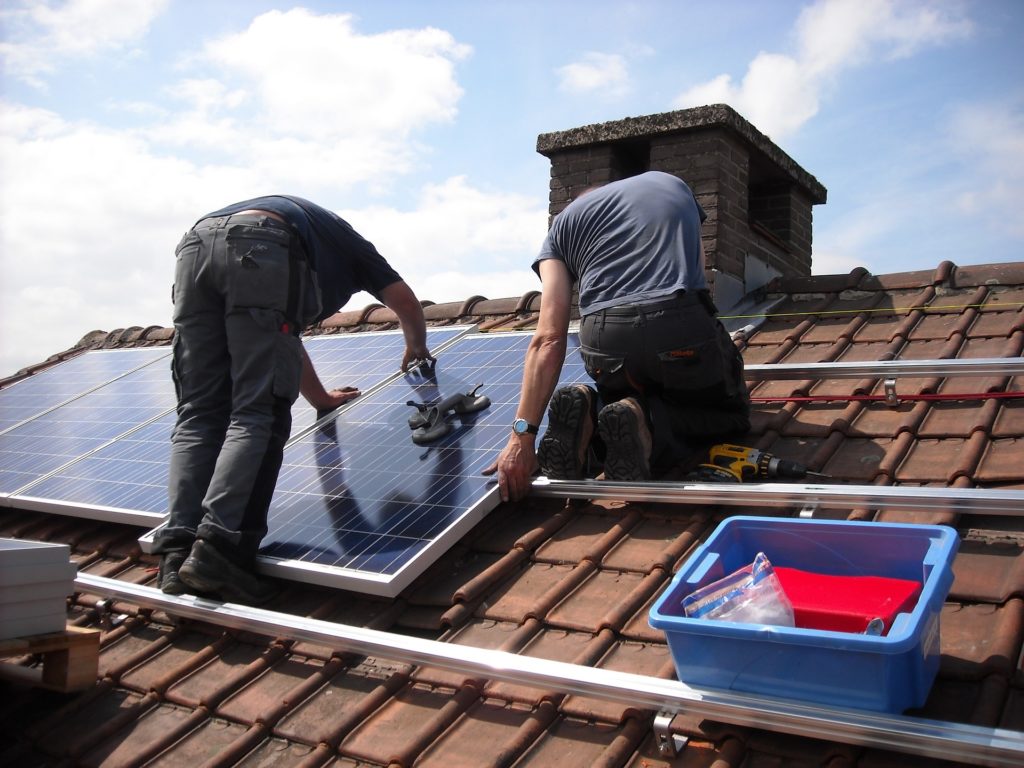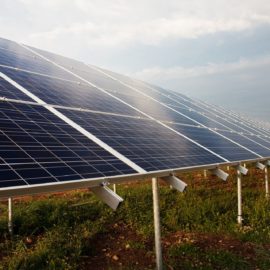
Hurricane Ida hit and the city went light less after the cables to the West Bank severed. Those with solar, and a battery, were able to survive better and also help their neighbors.
Jenel Hazlett didn’t have time to evacuate her family and their little zoo of pets as Hurricane Ida rapidly strengthened. Instead, they rode out the Category 4 storm in their house in New Orleans’ North Carrollton neighborhood. When Ida crippled a major Entergy electricity tower and transmission lines, it sentenced much of southeast Louisiana to a week or more of heat and darkness. But the Hazlett family’s 37 rooftop solar panels made the blackout bearable, channeling the sun’s energy down to two thin white lithium batteries that kept portions of the house powered. Though her house was still hot – the system lacks enough juice to run the central air conditioning all day – Hazlett’s solar panels and batteries saved some stress. While neighbors running gasoline-powered emergency generators struggled to refill their supply because fuel stations were closed, she looked to the sky. “During this whole Ida incident, I didn’t have to chase gas, I didn’t have to worry about carbon monoxide, I didn’t have to worry about extension cords,” Hazlett said Thursday. “The sun came to me.”
nola.com
Louisiana is in the lower half of the country for solar panels on houses but it may go up. The cost is a factor and the state is not helping as they cut the subsidy for homeowners installing solar systems.
Hazlett’s house is one of more than 19,000 in Louisiana with solar panels. The out-of-pocket cost for a 5-kilowatt system averaged $12,538 to $16,962 in Louisiana in 2019, not including federal tax credits, according to EnergySage, an online solar marketplace. The state ranks 38th in the U.S. for home solar panel installations, according to the Solar Energy Industry Alliance. But just a small fraction of that group has also installed the battery technology to store and use the energy on site, rather than simply selling it back to the grid for a discounted electricity bill. Without storage, the panels are of little help during a power outage, automatically shutting down to avoid electrifying the grid while workers are repairing power lines. Devin De Wulf, founder of the Krewe of Red Beans, has 24 solar panels and two $10,000 batteries attached to his house in Bywater. Unlike Hazlett’s neighbors, many on De Wulf’s street lacked their own means of generating power after Ida, so he turned his porch into a hub for charging portable electronic devices and distributing ice. His elderly neighbors’ oxygen machine, refrigerator and freezer also ran on solar. “What’s happening is my house is making my block, my immediate vicinity, more resilient because, to be honest, nobody else has shown up. Because they can’t – they’re overwhelmed,” he said. Neither Hazlett nor De Wulf could use their houses to their full capacity. But the sun-powered systems were enough to keep the lights on, appliances running and fans and small window air conditioners operating.
Solar panels also seemed to help keep the roofs intact even when no batteries were installed.
Louisiana solar companies say most of their customers with storage capacity fared similarly in the Ida outage. And customers without batteries, while they couldn’t produce electricity, saw little damage to their rooftop solar panels. The panel installation is rated for winds up to 140 miles per hour, said PosiGen CEO Thomas Neyhart and South Coast Solar owner Scott Oman. “Drive around: We’ve got drone shots that show neighborhoods where the roofs are torn off. And where the solar is, the roofs are still there,” Neyhart said. “We had 9,000 solar systems that were in the path of the storm. Very few of them are damaged.” When Oman tended to his Lake Charles clients after Hurricane Laura last year, he witnessed the durability of rooftop solar systems, which are typically anchored through the roof to the underlying rafters. “We saw homes where the panels were still attached … but the roof wasn’t attached to the house anymore,” he said. Oman and Neyhart said hurricane damage to panels typically occurs not directly from wind but when flying debris or a falling tree crushes the technology. If the roof itself must be repaired, solar companies must first remove the panels and later reinstall them.
Solar systems can be both leased and bought. Leased means far less money up front, if any, and you may not get full benefit of the power produced.
Neyhart’s company is focused on leasing rooftop solar systems to low- and moderate-income residents to increase access. It also has entered the roofing business for that reason, allowing PosiGen to become a one-stop shop for clients. Even if growth is slow for the companies, De Wulf wants to mimic the role his own house in played in Ida’s aftermath, by raising money to install solar panels and batteries on small neighborhood restaurants ahead of the 2022 hurricane season. “This hurricane has been just a real eye opener because of the needs of my community and my neighbors, and just seeing what’s occurred in the city,” he said. “We’re lucky that we have these things, and we just really want every person to have them.”
Solar is a good way to go and we have enough sun to make it worthwhile. Batteries are another heavy investment but their payback is worth it as well. Just having it for the past power failure would make it worthwhile.

